In our modern world, there are many of us that suffer from unhealthy gut flora. We can blame processed foods, added sugars, antibiotics, and prescription medications.
This report will offer you vital information about how to add fermented foods to your diet to improve your gut flora. You'll gain an understanding of why fermented foods are good for you, and how to make them.
As a culture, we've forgotten the healing magic of fermented foods and that we can do it at home ourselves! Much of the fermented foods available at the market lacked the nutritional value of our past when it was common to ferment foods.
But necessity is the mother of re-invention! Thus, fermentation is helping many of us find a way back to health and a more toxin-free diet.
You'll be amazed by how easy it is to ferment your foods! You'll also love the taste and nutritional value too! But first, let's define what fermentation is.
What is Fermentation?
The process of fermentation helps to preserve foods and make them more digestible and nutritious. Fermentation is an artisanal process of transformation using yeasts and microorganisms to convert sugars into lactic acid. You've probably seen labels on meats and cheeses that say “Cured” or Aged.”
This means that these foods include beneficial microorganisms such as Lactobacillus and Bifidobacterium.
Fermented foods are also called Cultured foods
When you see a food labeled “cultured,” it means that a chemical process was used to break down food into smaller parts. Fungi, yeast, or bacteria are typically used in the process.
If you've ever eaten yogurt, miso, tofu, or Amasake (rice fermentation), you've tasted fermented foods.
Before humans had refrigeration, fermented foods were the norm. Most cultures fermented their vegetables, meats, and dairy for their future needs. In Korea, fermented cabbage (Kimchi) is a staple, and in Germany, sauerkraut is fermented food eaten with sausages.
Some cultures accidentally discovered fermentation. For instance, raw milk, if left out for hours, can be transformed into what we know as yogurt. Mead, honeyed wine is made from adding honey to water and allowing the yeasts in the honey to act on the fermentation process.
And of course, let's not forget the grape which transforms into wine and hops, barley and yeast into beer! So, you have had fermented foods, after all! 😉
How the Lack of Fermented Foods Can Create Health Problems
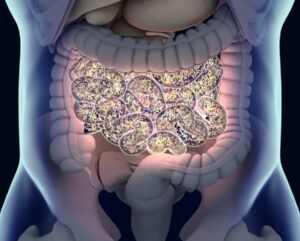
Eating fermented foods is not as much a part of our diet as they should be. The bacteria and yeasts that are part of fermentation make our digestive system work much more efficiently.
The lack of fermented foods can cause our digestive system to become weak and subject to all sorts of health issues like:
- Allergies
- Chronic fatigue
- Crohn's Disease
- Chronic Skin conditions
- Acid Reflux (Gerd)
- Lupus
- Multiple sclerosis
- Diabetes (Type 1)
- Fibromyalgia
- Kidney problems
- Osteoarthritis
- Inflammatory bowel disease
- Urinary system conditions
There are also mental and emotional conditions related to an unhealthy gut flora:
- Apraxia (brain damage)
- Autism
- ADHD
- Depression
- Dyslexia
- Obsessive-compulsive disorder
- Schizophrenia
A diet that includes whole foods (unprocessed), supplemented with fermented foods can reverse many of these conditions. Often, many of these health conditions are due to our fast-food, processed lifestyles.
After reading through this list of health and mental problems, hopefully, you can better understand why fermented foods are good for you.
Why You Need Beneficial Bacteria in Your Gut
Your gut microbiome plays a huge role in keeping you disease-free by improving digestion and benefiting your immune system. An imbalance of unhealthy and healthy bacteria in your gut may contribute to high blood sugar, weight gain and other health issues.
Beneficial bacteria are found in fermented foods. If' we're lucky, it can help to kill the bad bacteria that cause many of the conditions listed above.
Also, good bacteria in your digestive system can help to synthesize vitamins like B-7 (Biotin), B-12 and vitamin K. Without these essential vitamins you will likely notice hair loss, skin issues and or other degenerative health problems like Alzheimer's or Parkinson's Disease.
Many important gut functions like digestion, cell growth, and energy need good gut bacteria. Without it, the gut cannot use some of the carbohydrates consumed. This prevents the absorption of water, and the result is an increase in bad bacteria in the body.
Why Fermented Foods Are Good For You
The Nutritional Benefits
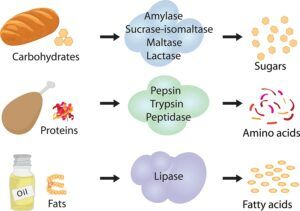
Fermented foods are chock full of vitamins and minerals, probiotics, enzymes, and natural immune system boosters.
Fermentation not only preserves food but also creates useful enzymes, Omega-3 fatty acids, and other healthy nutrients so that they are in a more digestible form. Unfortunately, the modern processing of food with technology rather than naturally, so many of the benefits are lost.
Here are some ways fermented foods are good for you and help keep you disease-free:
Improved Digestion and Food absorption
The balance of good gut bacteria and enzymes helps you absorb more nutrients from the food you’re eating. This means you won’t need to worry so much about whether you’re getting enough vitamins and minerals.
Provides valuable probiotics, vitamins, and enzymes
Probiotics are essential for the well-being of your digestive system. It has been scientifically proven that they can help improve:
- Intestinal health
- Digestion
- Immune system health
- Slow or reverse a variety of diseases.
Preserves food for future use
Foods that aren’t fermented will last a few days, at most, in the refrigerator. The Lacto-fermentation process lets you store foods such as beets, pickles, sauerkraut, and other types of vegetables longer without losing the precious nutrients.
Inexpensive
Fermenting foods is an excellent way to help your food budget. As you may have noticed, healthy foods can be more expensive than processed foods.
If you don’t have access to fresh produce that makes it very difficult to change to a clean diet, but, making your fermented foods is very simple and affordable. You will also discover that fermented foods have a long shelf life, too.
How Does Fermentation Work?
To work, fermentation uses key ingredients – sea salt, lack of oxygen, and cool temperature – to ferment the food so that it doesn’t spoil. Rather, it preserves the foods and the nutrients, making them healthier for you to eat.
The three main types of fermentation are:
1. Ethyl Alcohol – This process of fermentation is produced by bacterium and yeasts. Carbon dioxide and ethanol are the waste products of this type of fermentation. This type of fermentation produces products like wine, bread, and beer.
2. Lactic Acid – A fermenting process that uses bacteria such as those common in fungi and yogurt. You may have experienced a somewhat sour taste when eating yogurt because of the lactic acids.
3. Acetic Acid – Bacteria derives energy from the oxidation process when ethanol is fermented. Airborne bacteria are commonly found in fresh apple cider and beer that hasn’t been sterilized.
Without fermentation, we could not enjoy some of the tasty foods that we enjoy today, such as olives, wine, sausages, and yogurt.
During the process of fermentation, three beneficial organisms help do the work of fermenting the foods. These are what impart the taste and nutrition we want from the fermented food.
They are:
- Yeast – A one-cell fungi that you know best from baking bread or brewing beer. This micro-organism converts sugars into alcohol, acids, carbon dioxide, and water.
- Bacteria – One-cell organisms that eat starches and sugars contained in foods. They have a cell wall but don’t have an organized nucleus or organelles.
- Molds – Multi-cell organisms that produce enzymes that break down the food so that the organisms can consume it. Some forms of molds are undesirable, such as those we see on food left in our refrigerators too long.
Without these helpful organisms, we wouldn’t have the fermentation process. Some strains of the organisms can be harmful to us. But, by understanding the food preservation process, it’s possible to kill the harmful ones and benefit the beneficial ones.
Preserving Foods With Fermentation
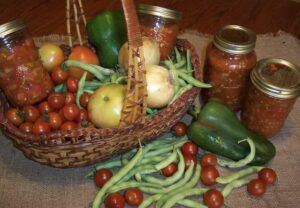
Fortunately, you can ferment and preserve your foods with very little equipment. It’s easy and quick and will save you money on your grocery budget.
Before buying the tools you need to begin fermenting your food, you should know that sanitation plays a key role in safely preserving food.
Some of the things you need to remember are that you don’t need a completely sterile condition to ferment foods. But, you do need a sanitary working environment.
This means you need to make sure your utensils and other tools for preserving are thoroughly washed and dried with a clean cotton towel.
Your goal here is to prevent spoiling organisms from taking control of your food and rendering it inedible. Don’t be discouraged if you do happen to have a spoiled batch of fermented foods. It can take time to can get a feel for the fermentation process.
You don’t need a ton of equipment to ferment food. And the equipment doesn’t have to be expensive. Here are some tools that can help pave the way to preserving your food:
Canning Jars
There are so many sizes and shapes of canning jars that you’ll easily be able to find them at your local hardware store or from online sources such as Amazon.
The 32 ounce, wide-mouth jars, seem to work best for preserving veggies and dairy, but you can find smaller or larger, depending on your need. Try and find the ones with airlocks.
Plastic Containers
Plastic isn’t the best choice for food fermentation. But, if you have to use plastic, be sure to buy BPA-free (BPA is a chemical compound often linked to health problems such as heart conditions, infertility, and diabetes).
Food Processor
It’s helpful to have a food processor if you’re preserving veggies. One that comes with slicing and grating attachments is the best. The slicing attachment is great for making sauerkraut, and the grater is good for carrots, beets, and most root vegetables. Use the S blade for chutneys.
Strainers
Have two plastic strainers (1.5 oz. and a 4-inch) available to strain kefir (from milk kefir grains). Use cheesecloth or a tea towel to make a thick yogurt or kefir. Use the 4-inch strainer to strain the milk kefir when the grains are small.
Yogurt Maker
Once you start making your yogurt, this will be your favorite fermenting tool. No electricity is needed, and you can make up to ½ gallon of creamy and delicious yogurt at one time. Be sure to completely fill the yogurt maker so that the temperature can be maintained for up to 20 hours.
Fermenting Crock Pot
You can find many brands and sizes of high-quality ceramic crock pots. If you find that you love fermented foods, they would be a great investment. Use them for fermenting sauerkraut, kimchi, and other veggies such as carrots, pumpkins, beans, peppers, and much more. Gases can escape from a fermenting crockpot, but air cannot enter.
Miscellaneous tools
In your basket of fermenting tools, keep a collection of cotton tea towels, cheesecloth, rubber bands, weights, and other items. You can place a cheesecloth over a jar and tighten it with a rubber band. You’ll find the items that you like to help you during the fermenting process.
It’s so much fun to preserve your foods, and it’s easier than ever. When you take the time to learn about the fermentation process and make your own, you’ll be amazed at the difference in texture and taste and how it makes store-bought items much less desirable.
The Best Ways to Preserve Food at Home
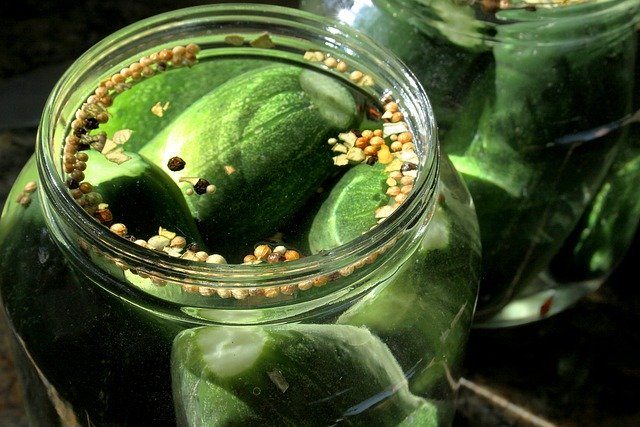
There are pros and cons to each of the two methods of fermenting foods at home. You may try more than one recipe before you settle on a particular one that suits your taste. There are a variety of foods you may want to preserve, including vegetables, condiments, chutneys, dairy, and fish.
The techniques vary between the different types of food. For example, vegetables need a brining process, whereas others need uncooked whey.
Here are two recipes for the various types of foods you may want to preserve.
1. Brine
You’ll need a simple brine mixture composed of the following ingredients:
- Fine Grain Sea Salt – 6 Tablespoons
- Course Grain Sea Salt – 9 Tablespoons
- 8 Cups water
Stir until dissolved. You may need to heat part of the water and salt combination if you want to use it right away.
This brine is great for vegetables.
Simply pour over the veggies you’ve packed in a jar.
Brine for meat or cheese will need more salt.
2. Uncooked Whey
Good for helping to preserve many foods. You’ll use a recipe made from yogurt, kefir, clabber or other fermented dairy product.
The process is simple.
- Line a strainer with a cheesecloth.
- Pour one quart of the fermented dairy into the cloth and tie the ends.
- Let the whey drip for a day.
This will produce about 2 cups of whey. You can then store the whey in airtight jars in the refrigerator for several weeks.
If mold appears, simply scrape it off.
Freezing whey is also possible, but if frozen too long may destroy some of the valuable organisms. You’ll be using uncooked whey in many of the fermentation processes for various foods.
You Can Easily Make These Fermented Foods
Now that you understand the value fermented foods can have on your health, you're probably enthusiastic about making your own. Almost any type of food can be preserved using one of the methods discussed in the previous section.
Here are some foods that can be fermented to preserve the freshness and flavor and also add nutrition to your diet.
Vegetables
The fermentation of vegetables requires brine for the standard method of lactic acid.
You can ferment:
- Whole vegetables
- A mixture of veggies
- Vegetables into chutneys
- Salsas
- Sauerkraut
- Dips
- Pickles and relishes
The covering of the brine helps to keep out the spoiling organisms so the fermentation process can safely take place.
You can also pound some vegetables to release brine. This is true in the case of making sauerkraut, salsas, relishes, and chutneys. The mixing releases the juices of the veggies. Adding salt helps the process.
Fruits
There is plenty of sugar in fruits, which you must take into consideration during the fermentation process.
Preserving whole fruits, jams, and chutneys requires a lactic-acid process. You can also use an alcohol method to create wines, chutney, and preserves.
Some fruit fermenting recipes call for the addition of sugar. But, you can use sweeteners such as maple syrup, honey, or stevia rather than refined sugars. Lactobacilli are the main type of friendly bacteria that help to ferment fruits, but yeasts and carbon dioxide also play a big part.
Condiments
Condiments can be the jeweled crown on a food feast. Fermenting condiments is much like fermenting vegetables. There are many easy and tasty recipes for all types of chunky or pureed condiments.
You’ll want to make sure that you use the top-quality products for your condiments. Always choose organic rather than what’s been grown by chemicals or other harmful products.
After you mix the condiments and store them (per the recipe) at room temperature, you should store them in the refrigerator—mayonnaise, ketchup, mustard, and even guacamole that tastes fresh when you’re ready to eat it.
Grains
Fermenting grains can help you make some of the tastiest and most nutritious bread you’ve ever had. Sourdough (another name for grain fermenting) is much more nutritious than the bread you buy at the market.
You can easily begin a “sourdough starter” and give it as a gift as you nurture the fermentation process.
As the sourdough process continues, the fermentation gives off gases that make the dough rise. You can then make the dough into bread, pancakes, or other tasty concoctions.
The great thing about sourdough starters is that they can last for years. Even hundreds of years! As long as you keep feeding it so that the bacteria can keep on working.
Beverages
You can create non-alcoholic and alcoholic drinks with fermentation. Fruits and vegetables can produce amazing, “super tonic” drinks that your entire family will love.
Kombucha (also referenced as Kombucha) is a Russian concoction that has impressive health benefits.
Water kefir — a sweet soda is made with yeast and lactic acid is fun to make, delicious, and good for you.
Try non-alcoholic fermenting for making lemonade, coconut water, and kanji (a hot and spicy beverage made with chili peppers).
Alcoholic beverages such as beer and Scottish ale can be fermented by using an ‘extract’ brewing method. When certain grains become moist, they sprout and become sweet because of the germination process that binds carbohydrates and produces simple sugars or malts to feed the sprouts.
Honey Kombucha is another great recipe for fermentation. Use a kombucha starter and wildflower honey, tea bags, and water to create one of the healthiest, most delicious drinks on the planet.
Dairy Products
Non-cheese and simple cheese products can be made from the fermentation process. Yogurt, sour cream, buttermilk, and cream cheese involve a process of fermentation that differs quite a bit from other methods.
You’ll need a starter culture for non-cheese products and rennet (a coagulation substance) for the simple cheese products. You can make delicious dishes from the fermentation of dairy products such as Kefir ice cream, yogurt parfaits, and more.
Today’s dairy products we purchase in the supermarket have been processed in a way that takes away much of the nutritional value. Fermenting your dairy products ensures that the vitamins and minerals remain and that the taste is much more natural.
Beans
The fermenting beans greatly improve their nutritional benefits – especially soybeans. The fermentation of beans helps to break down the complex sugars that stress the digestive system. It also helps to increase the vitamin and beneficial enzymes in beans.
When soy is fermented, it can be made into several dishes, such as hummus, tempeh, and miso. You’ll need very specific mold and bacteria cultures that you can easily buy from online resources.
After the fermentation process is complete, turn your concoction into tasty and healthy recipes such as hummus (made from chickpeas), tempeh (a fermented soybean cake), and bean paste (from black beans, pintos, or red beans). You'll have a feast of great-tasting foods.
Meats and Fish
Before refrigeration, we had to come up with methods that could preserve the meats and fishes for as long as possible. Brined, fermented, and smoked meats are a great way to preserve the protein we need in our diets.
Brining the meat is one way to make it safe for consumption. Fermenting sausage by drying the meat is another way to preserve the meat.
Smoking is another way to improve the flavor of meats and fish. For this, you’ll need to buy a smoker or build your own. There are many great instructions online and in books to help you with this process.
When you ferment your foods, you’re creating the best possible chelator and detoxing agents. The fermenting process produces highly beneficial microbes necessary for balancing your intestinal flora so that your immune system works to its top capacity.
Besides helping the health of your gut, fermenting foods will provide benefits to your brain also. Since the gut produces serotonin (neurotransmitter), you’ll have a boost in wellbeing once your diet is enhanced with fermented foods.
How to Introduce Fermented Foods into Your Diet
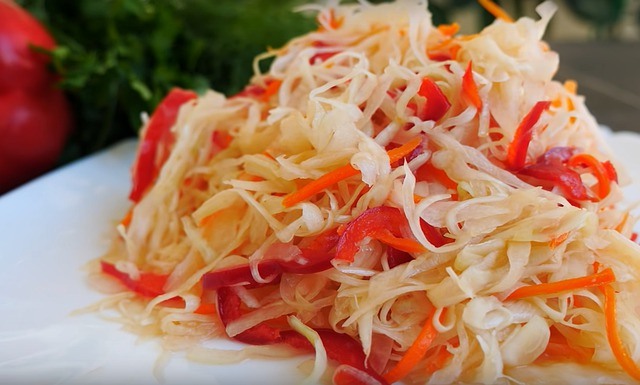
Hopefully, you’ve learned why fermented foods are good for you and the importance of adding them to your diet. You’ll be amazed at how your fermented foods taste compared to the “watered down” version we get from your local market.
Don't forget to follow us on Pinterest. Thank you for your time and reading.
The information presented here is in no way meant to serve as medical advice. It is merely information and opinion. All information, content, and material of this website is for informational purposes only and are not intended to serve as a substitute for the consultation, diagnosis, and/or medical treatment of a qualified physician or health care provider. If you are experiencing symptoms of any kind, please consult with your physician.


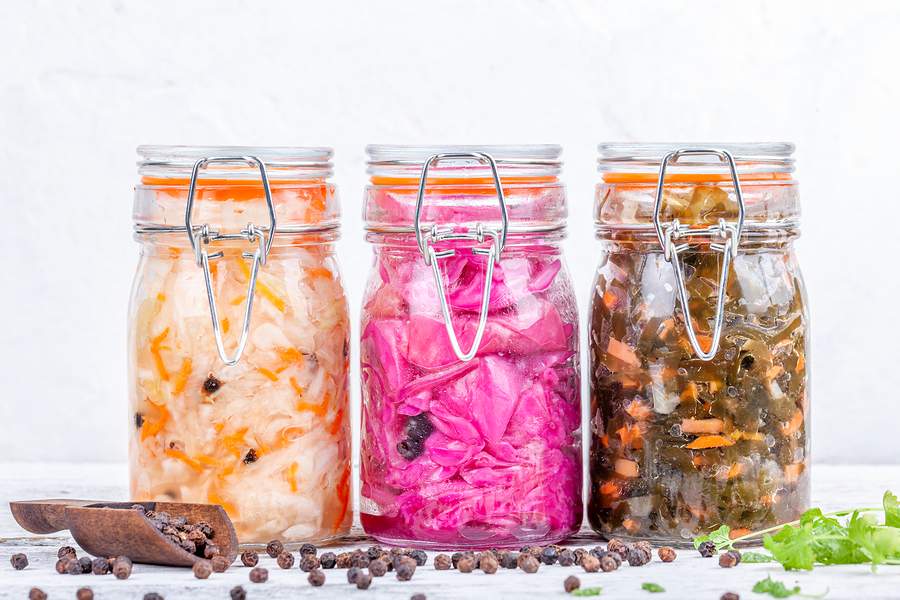
I am trying to eat allot more healthier but its hard with all the junk food and fating foods out today.